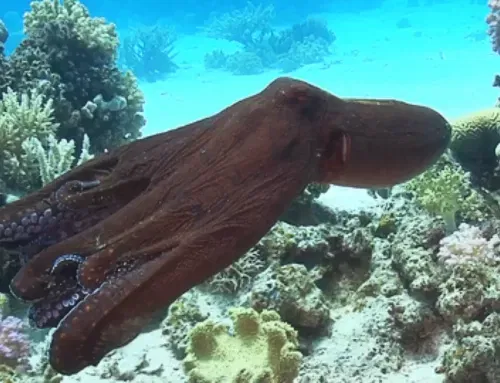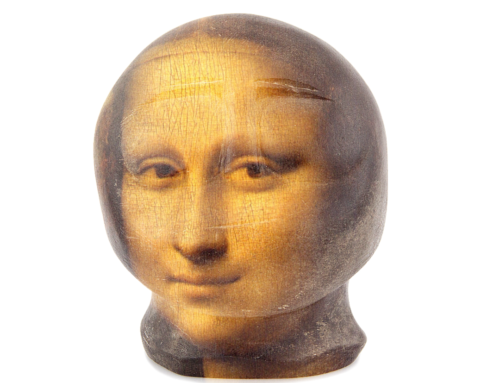Sometimes a novel absorbs me so completely I keep turning pages to find out what happens. If the outcome satisfies me, say the boy gets the girl (or vice versa!), I’m happy. If the girl marries someone else, such as in the short story White Nights by Fyodor Dostoyevsky, I’m crushed, as if I was the poor, unrequited boy. Oh my god, how sad that story was. But it was fiction (I presume), and I wasn’t reading my own story in my mind. Nothing quite the same (fortunately) ever happened to me.
The same transference – fiction feeling like reality – often occurs when I watch a movie. I can’t remember the number of times I was left satisfied, or crying, or just downright miserable, because someone wrote a story to make a buck.
Why do I care about what happens in a made-up story?
What else seems alive that isn’t?

Bust of The Monster in Mary Shelley’s Frankenstein, by André Ribeiro from Curitiba, Brasil, on display at Museo Nazionale del Cinema, Turin.
Frankenstein comes to mind, Mary Shelley’s ghost story she imagined while on vacation in Switzerland with her husband, the poet Percy Shelley, and Lord Byron plus a few friends. The story is about a human-like monster – a misunderstood killer – created by Dr. Frankenstein from exhumed spare parts of corpses. The book, published originally in 1818, became an icon for giving birth to a fictional person from assembled dead organs. We think of the monster as alive. For at least two hundred years, then, we’ve considered make-believe people as real in our minds.
The computer age goes further and bestows life from machinery. Think of the lovable robots, R2D2 and 3CPO, made of steel and gears in Starwars. They have human reactions and communicate with us – quite extraordinary, even more so than White Knights, where we empathize with fiction, or Frankenstein, where we think of dead parts reassembled to life. We accept robots as fellow people, at least to some extent: inanimate becomes animate in our minds. We wish them well, and we suffer if they’re destroyed.
Recall the Cassini spacecraft that crashed and burned on September 15 after orbiting Saturn and sending data back to Earth for 13 years. The feeling was like losing a partner, a friend and compatriot, not just useful hardware. And in the movie Her, a lonely writer falls in love with the voice of an operating system – virtual reality, life from a machine.
In addition to perceiving fiction as reality, or accepting monsters from corpses as alive, or marveling at robots as living equals, I see life in art – mere objects – that release feelings and emotions in us. Sculptures or paintings that are no more than shaped stones or pictures on canvases – decorative art – are not art in the same sense. I mean art that crosses borders and exhibits a presence that assumes a life in me, differing from a character in riveting fiction. I am the narrator – the voice – of the art that speaks to me.
I’ve written about this metaphorically in terms of my Inuit art collection. The protagonist in my short story “Immobilon” becomes paralyzed in his study, which is filled with Inuit sculptures. Unable to leave, totally confined, he hears for the first time the sculptures speaking among themselves, as well as to him. He realizes that he has loved these pieces for years without knowing how alive they were for him, how they have spoken to his deaf ears, so he never fully appreciated their life.
In my memoir, well on its way to completion, I describe my first glimpse of life in Inuit sculptures when I entered a gallery in Vail:
“Can I help you,” asked the storeowner, Jim Robbins.
“I’m just browsing. Amazing things here.”
Some of the carvings were green stone streaked with dark veins, and some black or dark grey stone; others were made from marine ivory or whalebone. The shop teemed with sculptures of Arctic life: caribou, polar bears, walrus and otters; family groups; wrestling figures, hunting and fishing scenes; women in childbirth; representations of Inuit myths – notably the Sedna, goddess of marine life – and shamanic transformations.
I’d never heard of the regions from which the different pieces originated in northern Canada, or the nearly unpronounceable names of the Inuit artists. I listened with one ear at best. It was as if a sexy lady had just appeared and a stranger started telling me where she was from, what her parents did for a living and what college she’d attended. Naturally my attention would be riveted on her – her smile, her curves, her charm – not her life history. And so it was with the sculptures. I gazed. I touched. They were inanimate objects, yet they were alive for me.
And so it seems our life isn’t trapped within our skin. We adopt fiction, robots, computers and art as part of ourselves in one way or another and give them life.
What’s alive? It’s what we make alive for ourselves, just as what we see and what we hear is what we look at and what we listen to.






Leave A Comment